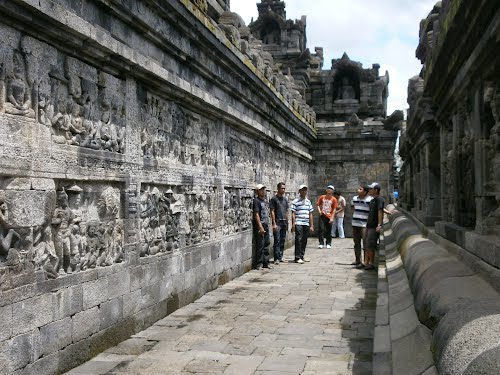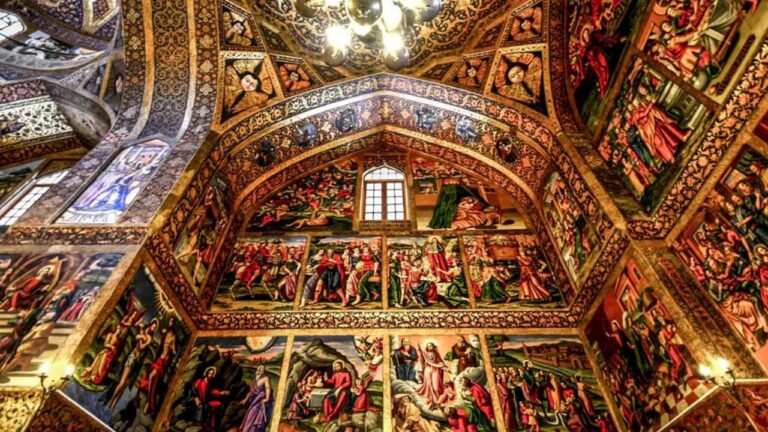Borobudur Temple, The Great Architectural and Philosophy
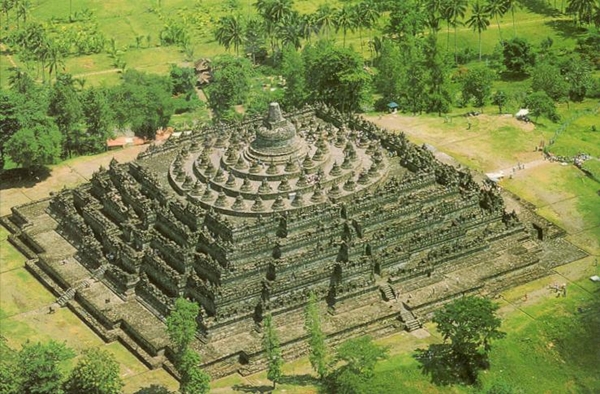
Indonesia is famous as for the most Islamic population, but in the ancient time before Islamic religion entrance, Buddhism and Hinduism was dominating religion here. So no wonder if hundreds of Buddhist and Hinduism archeology temple spread around the country especially on Java Island. One of the most famous and incredible temple is Borobudur temple, one of seven wonder of the world. This Buddhist temple located at Magelang, Central Java about 40 minutes drive from Yogyakarta.
Borobudur was built by King Samaratungga, one of the king of the ancient Mataram kingdom, descendant of Sailendra dynasty. Based on the Kayumwungun inscriptions, an Indonesian named Hudaya Kandahjaya revealed that Borobudur is a place of worship that was completed on 26 May 824, almost one hundred years since the beginning of construction.
The name of Borobudur, as some people means a terraces mountain (budhara), while the other says that Borobudur means monastery on the high place.
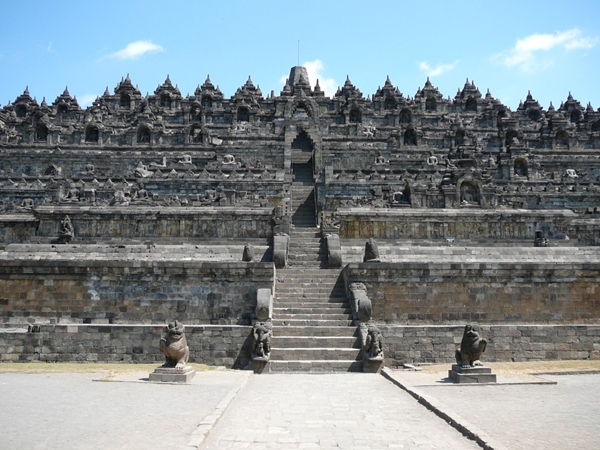
Borobudur temple have 146 relief and 540 Budha stupa. Millions of people yearn to visit the building that includes world wonder Heritages. Not surprisingly, since architecturally and functionally as the place of worship, this ancient building is attractive.
Besides the beauty of its architecture, the Borobudur Temple is also located in the beautiful mountains area, surrounded by Manoreh hill stretching from east to west. While the east are Mount Merapi and Merbau, and the west side there Mount Sindoro and Sumbing. Moreover, the high altitude of Borobudur Temple is the perfect place to enjoy the beauty of the sunrise and sunset.
Borobudur Temple was built in the 9th century, 3 centuries before Angkor Wat in Cambodia and 4 centuries before the cathedral in Europe.
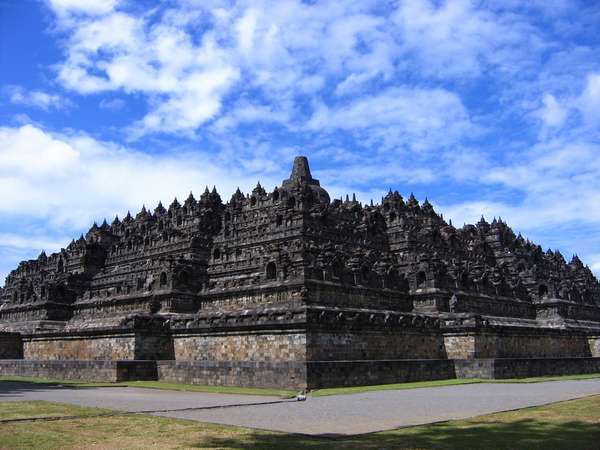
Borobudur constructed as a ten-terraces building. With the hight 42 meters before renovation and 32,5 meters after renovation. The First six terrace are square form, and two upper terrace are in circular form, and on top of them is the terrace where Buddha statue is located facing westward.
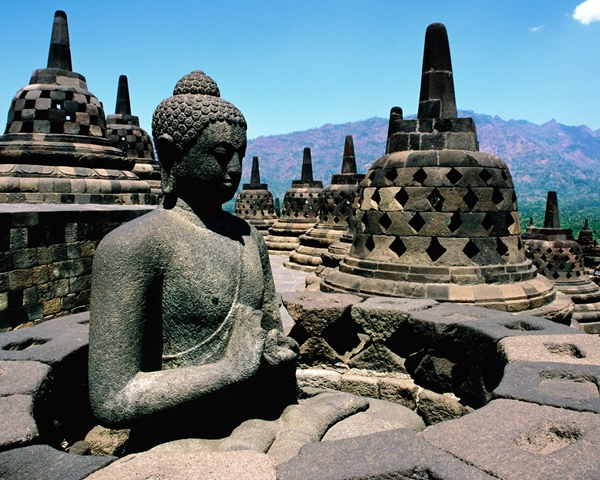
Each terrace symbolizes the stage of human life. In line with of Buddha Mahayana teaching, anyone who intends to reach the level of Buddha’s must go through each of those life stages.
The base of Borobudur, called Kamadhatu, symbolizes human being that are still bound by lust. The upper four terrace called Rupadhatu symbolizing human beings that have set themselves free from lust but are still bound to appearance and shape. On this terrace, Buddha effigies are placed in open space; while the other upper three terraces where Buddha effigies are confined in domes are called Arupadhatu, symbolizing human beings that have been free from lust, appearance and shape. The top part that is called Arupa symbolizes nirvana, where Buddha is residing.
Each terrace has beautiful relief panels showing how skillful the sculptors were. In order to understand the sequence of the stories on the relief panels, you have to walk clockwise from the entrance of the temple from base to the top. The relief panels tell the legendary of Ramayana and also many other legend. Besides, there are relief panels describing the condition of the society of Javanese people at that time; for example, relief of farmers’ activity reflecting the advance of agriculture system and relief of sailing boat representing the advance of navigation. Some of this relief, made the replica and show at the museum on complex of Borobudur Temple.
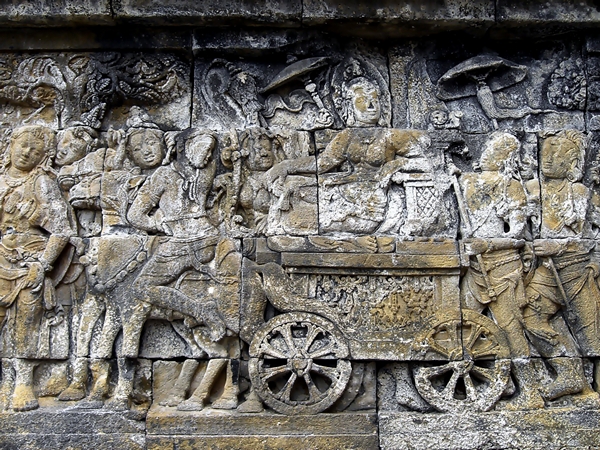
Borobudur was built over 70 years! The architect who designed it was Gunadharma. It takes more than 2 million blocks of volcanic rock to build the temple of Borobudur. Stones, which were taken from the river around the Borobudur Temple. Interestingly, at that time they did not use adhesive, cement, or the like. Interesting technique to lock into a sticky rocks and hold for centuries are ‘Key L’.
If you visit there, you can notice any foothold in Borobudur temple. The rock is not shaped like a structured tiles boxes. However, the rock forming the letter ‘L’. An incredible method that has been discovered centuries ago.
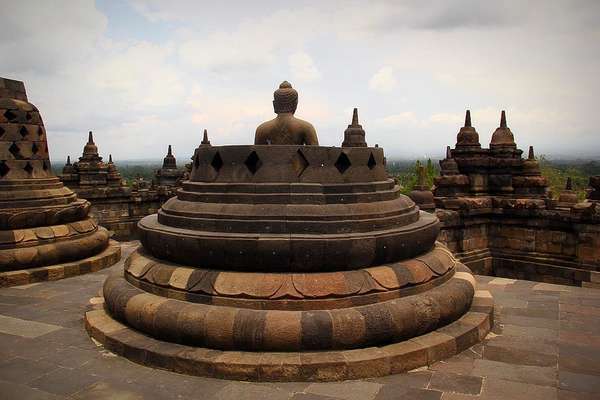
Accommodation at the Borobudur Temple
Borobudur complex provide quite complete facilities and accommodations such as the hotel / lodging, restaurants, souvenir shops are very complete. Around Borobudur Temple is also available ‘Andong’ (a type of horse carriage) which can be used to around the temple complex. Because the road to Borobudur quite far, there on also provide engine train for those whom lazy to walk The admission price for the local tourist 15000-17000, – IDR, while the price of tickets for international tourists between US$ 8-15 .
